
The CADWorx Plant Professional Training Course offers in-depth knowledge of intelligent plant design using CADWorx within the AutoCAD environment. Participants learn to model piping systems, equipment, and structures, create specifications, perform clash detection, and generate isometric drawings and material reports. This course is ideal for professionals in piping and plant design, aiming to streamline project execution through data-rich 3D modeling and integration with analysis tools like CAESAR II.
Plant Design using CADWorx Plant Professional Training Interview Questions Answers - For Intermediate
1. What are the primary file types used in CADWorx Plant Professional projects?
CADWorx primarily utilizes DWG files for storing design models, along with PRJ files for project settings and SPEX files for specifications. ISOGEN settings may use OPF files. Catalogs and specifications created using the Spec Editor are saved in *.cat and *.spe formats respectively.
2. How does CADWorx handle structural steel modeling?
CADWorx includes a Structural module that allows users to model steel members like beams, columns, ladders, and platforms using standard shapes (e.g., I-beams, channels). The tool provides libraries from AISC, DIN, and other standards, enabling users to place, modify, and annotate structural components intelligently.
3. What is the process of associating data with piping components in CADWorx?
Each piping component in CADWorx is assigned data attributes such as line number, tag, service, and spec. These properties are entered during modeling or edited later using the Component Edit or Data Palette tool. This metadata is essential for reporting and integration with analysis tools.
4. How are pipe supports modeled and managed in CADWorx Plant Professional?
Pipe supports are added using the Support tool, which provides a range of standard support types. Supports are placed along pipe runs and can be customized to project requirements. CADWorx also allows exporting supports to stress analysis tools like CAESAR II for accurate load calculation.
5. What are some commonly used CADWorx commands for pipe modeling?
Common CADWorx commands include ROUTEPIPE for routing piping, COMPONENTEDIT for modifying component data, PLANTBOM for generating BOMs, ISOGENOUT for generating isometrics, and CLASHREPORT for clash detection. These commands streamline design tasks within the AutoCAD environment.
6. How does CADWorx support collaboration across multiple designers or teams?
CADWorx supports multi-user collaboration through the use of XREFs and split modeling. Different areas or disciplines can be worked on in separate DWG files and referenced together for coordination. Project standards and specifications are shared across users using common PRJ and SPEX files.
7. Explain the importance of the Spec Editor in a CADWorx workflow.
The Spec Editor is critical for defining the materials, pressure classes, and component rules used in a plant model. It ensures that all piping components conform to engineering standards and specifications. Accurate specs prevent errors during modeling and ensure compliance with project requirements.
8. How can users generate orthographic drawings from a 3D model in CADWorx?
Orthographic drawings are created using the ORTHOGEN tool or Ortho Generation Manager. Users define drawing views and scales, and select areas of the model. The tool then generates 2D orthographic views, including dimensions, annotations, and title blocks, which can be placed on sheets for documentation.
9. What is the role of catalogs in CADWorx Plant Professional?
Catalogs contain the base data for piping components used in specs. They include dimensional, material, and visual information for pipes, fittings, valves, and other parts. Catalogs are linked to specs and ensure that component geometry and properties are consistent across the project.
10. Describe the process of connecting equipment to piping in CADWorx.
Equipment is modeled using the Equipment module, and nozzles are defined on the equipment surfaces. Piping is then routed from these nozzles, ensuring connectivity. CADWorx automatically recognizes nozzle data, enabling proper alignment, tagging, and integration with reports and isometric drawings.
11. How are design errors typically identified in CADWorx models?
Design errors are identified through tools like Clash Detection, Component Validation, and Spec Checking. These tools verify connectivity, spec compliance, and detect physical interferences. Errors are flagged in the model and listed in reports, allowing designers to make corrections before finalizing the design.
12. What is the function of the Data Palette in CADWorx Plant Professional?
The Data Palette displays and allows editing of metadata for selected components. Users can filter, sort, and group data, making it easier to manage large models. It is commonly used for QA/QC, bulk editing, and ensuring consistency across the plant model.
13. How does CADWorx ensure data consistency when exporting to other software?
CADWorx maintains data consistency through standardized file formats and mappings. When exporting to tools like CAESAR II, the software includes line numbers, component data, and geometry in a neutral format. This ensures accurate transfer of model information for analysis or documentation.
14. How can users manage revisions and change tracking in CADWorx?
Revisions are managed through drawing version control and annotation tools. CADWorx allows tagging changes using revision clouds, notes, and layer conventions. Integration with document management systems helps in tracking file history and ensuring that stakeholders work with the latest versions.
15. What challenges are associated with large plant models in CADWorx, and how are they mitigated?
Large models may lead to performance issues, file size problems, and difficulty in navigation. These challenges are mitigated by using external references (XREFs), breaking down models into logical areas, purging unused elements, and using hardware acceleration. Efficient layer management and view controls also improve usability.
Plant Design using CADWorx Plant Professional Training Interview Questions Answers - For Advanced
1. How does CADWorx Plant Professional enhance inter-discipline coordination in a plant engineering project?
CADWorx enhances inter-discipline coordination by supporting the integration of structural, mechanical, and piping models within a unified AutoCAD-based environment. Through the use of intelligent XREFs and data-linked components, it allows teams from different disciplines to work in parallel while maintaining model integrity. The software provides clash detection tools to identify interferences between piping, equipment, and structural elements, which promotes early conflict resolution. This integrated approach reduces rework, improves accuracy, and helps ensure that design deliverables are aligned across departments throughout the project lifecycle.
2. What role does the Data Palette play in managing plant data in CADWorx?
The Data Palette in CADWorx acts as a central hub for viewing, filtering, and editing metadata associated with plant components. It provides users with a structured tabular view of model information, including line numbers, specifications, services, and tagging details. This facilitates quality checks, bulk data modifications, and the identification of inconsistencies within the model. By enabling users to isolate specific systems or properties, the Data Palette significantly improves data management efficiency and supports compliance with project standards.
3. What are the key considerations when designing for modular construction in CADWorx?
When designing for modular construction in CADWorx, it is important to consider the physical boundaries and transport limitations of each module, as well as the need for precise alignment during site assembly. The model should clearly define module separation lines, connection points, and lifting arrangements. Designers must ensure that all piping, structural supports, and equipment are self-contained within the module and that external tie-ins are logically positioned. CADWorx facilitates this by allowing clear segmentation of the plant layout and generating deliverables specific to each module for fabrication and logistics planning.
4. How does CADWorx support the extraction and customization of reports for project stakeholders?
CADWorx supports report extraction through its built-in reporting tools that utilize model data to generate structured outputs such as material take-offs, valve lists, nozzle schedules, and line summaries. These reports can be customized to match client or project-specific formats by configuring data templates and report styles. Reports are exportable in various file formats such as Excel or CSV, enabling integration with procurement, construction, and asset management systems. This ensures that stakeholders receive consistent and accurate information aligned with their workflow needs.
5. How can piping designers ensure specification adherence when working across multiple design teams in CADWorx?
To ensure specification adherence across multiple design teams, a unified project file that includes standardized specifications and catalogs must be used. Teams should be instructed to reference the same project configuration and avoid creating local modifications. Centralized management of the specification files, regular audits using validation tools, and clear documentation of modeling guidelines help in maintaining consistency. Effective communication among teams and the use of shared servers or document management systems further support coordinated specification usage.
6. How does CADWorx facilitate design review and approvals during various stages of a plant project?
CADWorx facilitates design review and approvals by providing visual clarity, annotation tools, and exportable 3D and 2D documentation that can be shared with stakeholders. Models can be reviewed in native AutoCAD or exported for visualization in neutral formats. The use of layers, section views, and viewpoint saving enhances model navigation during reviews. Additionally, changes can be marked using revision clouds and comments, allowing for clear tracking of feedback. These features streamline review cycles and help maintain a record of design decisions.
7. What is the significance of assigning proper tag numbers in CADWorx and how does it affect downstream activities?
Assigning proper tag numbers in CADWorx is crucial for identification, traceability, and integration with other engineering systems. Tags serve as unique identifiers for equipment, instruments, valves, and other components, enabling easy reference in documentation, procurement, and maintenance records. Correct tagging ensures that isometric drawings, BOMs, and data sheets are accurate and consistent. It also supports the digital handover process by aligning design data with asset management systems, thus enhancing the efficiency of operations and maintenance after commissioning.
8. How does CADWorx help in maintaining compliance with industry codes and standards?
CADWorx helps maintain compliance with industry codes and standards by enforcing rules through its specification-driven modeling approach. Specifications are configured based on recognized codes such as ASME, ANSI, and DIN, ensuring that only code-compliant components can be used. The software also enables validation of line parameters and pressure classes, preventing users from assigning incompatible materials or ratings. Through integration with analysis tools and adherence to design conventions, CADWorx helps ensure that final designs meet safety and regulatory expectations.
9. How can designers manage changes and revisions in CADWorx during the execution phase of a project?
Designers manage changes and revisions in CADWorx by using a combination of revision blocks, version-controlled drawings, and annotation tools. Revision clouds and comments can be placed on drawings to highlight modified areas, and backup copies of original files are maintained for traceability. Change logs may be generated through comparison reports or manual documentation. These methods help stakeholders understand what was modified and ensure that all teams are working with the most current version of the design.
10. How does CADWorx support flexibility in late-stage design changes without compromising model integrity?
CADWorx supports flexibility in late-stage changes by allowing component-level modifications without disrupting overall connectivity or metadata. Its parametric design approach ensures that updates to pipe routes, equipment positions, or specifications can be applied efficiently, while the system automatically adjusts related elements such as supports and nozzles. Integration with reporting tools ensures that changes are reflected in all documentation, minimizing manual corrections. The ability to isolate sections of the model using filters also allows designers to make changes with precision and control.
11. What is the role of layer management in improving productivity in CADWorx?
Layer management in CADWorx plays a critical role in organizing components and improving model clarity. By assigning different systems—such as process, utility, structure, and equipment—to distinct layers, designers can selectively view or hide elements, reducing screen clutter. This improves performance and allows for focused design tasks. Layers can also be used to highlight specific line numbers, disciplines, or revision statuses, aiding in coordination and QA/QC efforts. Effective layer use enhances navigation and reduces the chances of errors in complex projects.
12. How can CADWorx models be used to support plant maintenance and asset management post-construction?
CADWorx models serve as a digital twin for the plant, providing detailed geometric and attribute information for all components. This data can be integrated with asset management systems to support maintenance schedules, inspection tracking, and spare part inventory. Tagged components allow technicians to locate equipment visually and access specifications or maintenance history directly. Over time, updates to the model can reflect physical changes in the plant, ensuring that operations teams work with up-to-date information. This enhances reliability and reduces downtime in plant operations.
13. What are the challenges associated with multi-discipline model coordination in CADWorx and how are they mitigated?
Multi-discipline coordination in CADWorx can be challenging due to differences in modeling practices, file management, and component ownership across teams. These challenges are mitigated by establishing a shared modeling standard, using reference files for discipline separation, and conducting regular model coordination reviews. Clash detection tools help identify and resolve interferences early. Clear communication protocols and centralized file servers ensure that all teams are working on synchronized versions of the project, reducing rework and improving integration.
14. How can CADWorx be used to support constructability analysis during the design phase?
Constructability analysis in CADWorx is supported by modeling realistic space constraints, equipment access zones, and lifting paths. The software allows designers to visualize assembly sequences, identify tight spaces, and evaluate the feasibility of component installation. Walk-throughs and 3D section views help in assessing how easily elements can be transported or welded in the field. This proactive analysis reduces field modifications, improves installation efficiency, and ensures that the design can be practically executed within the available site conditions.
15. What benefits does CADWorx offer when used in conjunction with document control systems or PLM platforms?
When integrated with document control systems or product lifecycle management (PLM) platforms, CADWorx enhances traceability, revision control, and data accessibility. Drawings and models can be versioned, checked-in/out, and linked to associated documents such as specifications, datasheets, or vendor files. This centralized management streamlines approval workflows, reduces duplication of data, and ensures that stakeholders access the most recent and approved design files. It also supports compliance with quality management systems and provides a structured audit trail for regulatory and internal reviews.
Course Schedule
| Nov, 2025 | Weekdays | Mon-Fri | Enquire Now |
| Weekend | Sat-Sun | Enquire Now | |
| Dec, 2025 | Weekdays | Mon-Fri | Enquire Now |
| Weekend | Sat-Sun | Enquire Now |
Related Courses
Related Articles
Related Interview
Related FAQ's
- Instructor-led Live Online Interactive Training
- Project Based Customized Learning
- Fast Track Training Program
- Self-paced learning
- In one-on-one training, you have the flexibility to choose the days, timings, and duration according to your preferences.
- We create a personalized training calendar based on your chosen schedule.
- Complete Live Online Interactive Training of the Course
- After Training Recorded Videos
- Session-wise Learning Material and notes for lifetime
- Practical & Assignments exercises
- Global Course Completion Certificate
- 24x7 after Training Support



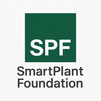

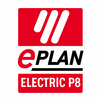
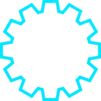
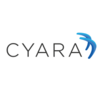
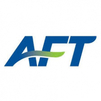
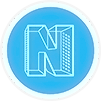

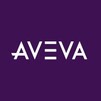


 Join our Live Instructor-Led online classes delivered by industry experts
Join our Live Instructor-Led online classes delivered by industry experts